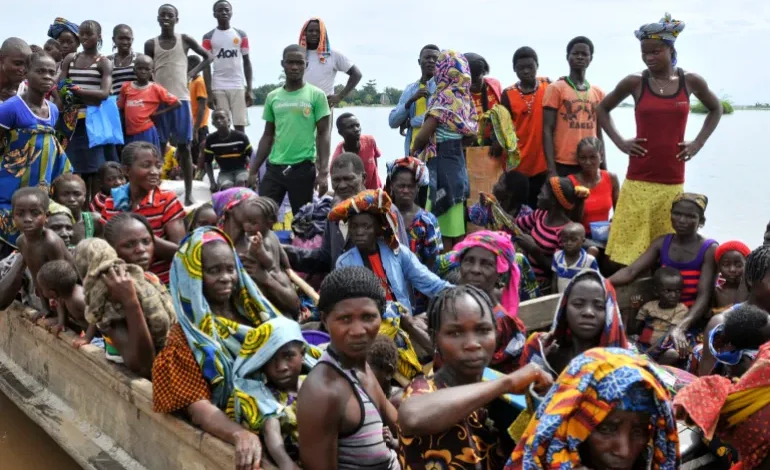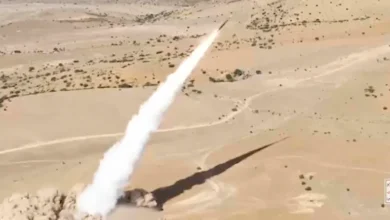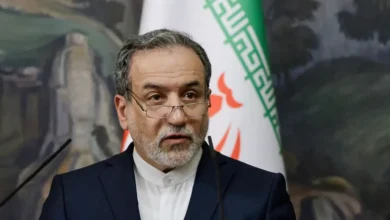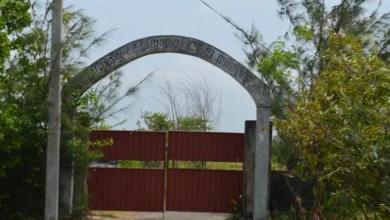Could AI save Nigerians from devastating floods?

In the small village of Ogba-Ojibo in central Nigeria, sitting at the confluence of two of the nation’s largest rivers – the Niger and Benue – 27-year-old Ako Prince Omali is counting the steps carved out of the dirt, which lead down the loam-coloured banks of the river Niger. This river bank, dotted with tufts of spiky grass, is where villagers come to fish or wash produce and laundry.
Just last week, three of the steps were submerged during one night of rain, which raised the water level by about five metres. Normally, you can count seven steps down into the river. Now, only four remain above the surface of the water, the sticks bracing the muddy steps having washed away in the deluge.
Omali, a subsistence farmer whose one hectare of cropland has been wholly submerged, has been monitoring the level of water in the river for the past few weeks. The third-longest on the continent, the Niger is a major river in West Africa, originating in the Guinea highlands and discharging into the Atlantic Ocean via the expansive Niger Delta.
Flooding, one of the most common natural disasters in the world, is a seasonal occurrence for the 4.5 million people living in Kogi State, named for a Hausa word meaning river. Most Ogba-Ojibo villagers are subsistence fishermen and farmers whose livelihoods are especially susceptible to environmental changes.
Nigeria has the second-highest number of people in the world vulnerable to flooding after India – 15 million in total. In 2022, 470,000 people in Kogi alone were affected by flooding.
But this year is expected to be particularly hard. As of mid-September, one million people have been displaced following the collapse of a dam in Borno State, with some still stranded in their homes, others fleeing to relatives in other states or government-supported displacement camps. In Kogi, a further 250,000 people are at risk of displacement, according to local authorities.
Usually, aid agencies such as the Red Cross, the International Organization for Migration, or the State Emergency Management Agency step in at this point to distribute emergency food supplies, but while this is welcome, it does not address the underlying issue – that the floods come every year.
Now, new innovative programmes are starting to appear, aiming to help people prepare for floods in advance.
Three months of disruption every year
New ideas are what is needed here, says Omali, as the floods have been getting worse for years across the country as a whole. Back in 2012, when Omali was 15, he recalls, was when “the flooding became very disastrous” for the residents of his home in Kogi State.
The mud-patched bamboo hut that his wife and young daughter live in with him has been completely flooded this year, along with the small plot where his parents toiled over rice and yams when he was young.
During his childhood, he says, “We started relocating when the floods came, which would be for two and a half to three months [each autumn] every year”. The family would cross the river in small paddle boats with their few belongings to Idah, located a few kilometres away on higher ground. It is where Omali goes with his own wife and child when the water gets too high.
Life in Idah is far from easy when the family makes its home there for those few months each year. They squat under bamboo sticks covered with cellophane bags to create a makeshift shack; the children’s schooling comes to a halt as all the schools are closed.
“People are crammed together, there are challenges with ventilation, we have very little food,” says Omali. “The [lack of] access to hygiene, [clean] water and facilities is very stressful.”
During these difficult periods, all 300 households of Ogba-Ojibo lose access to their farmland.
It can take up to four months for the floodwaters to subside, draining away fertile, delicate topsoil in the process.










